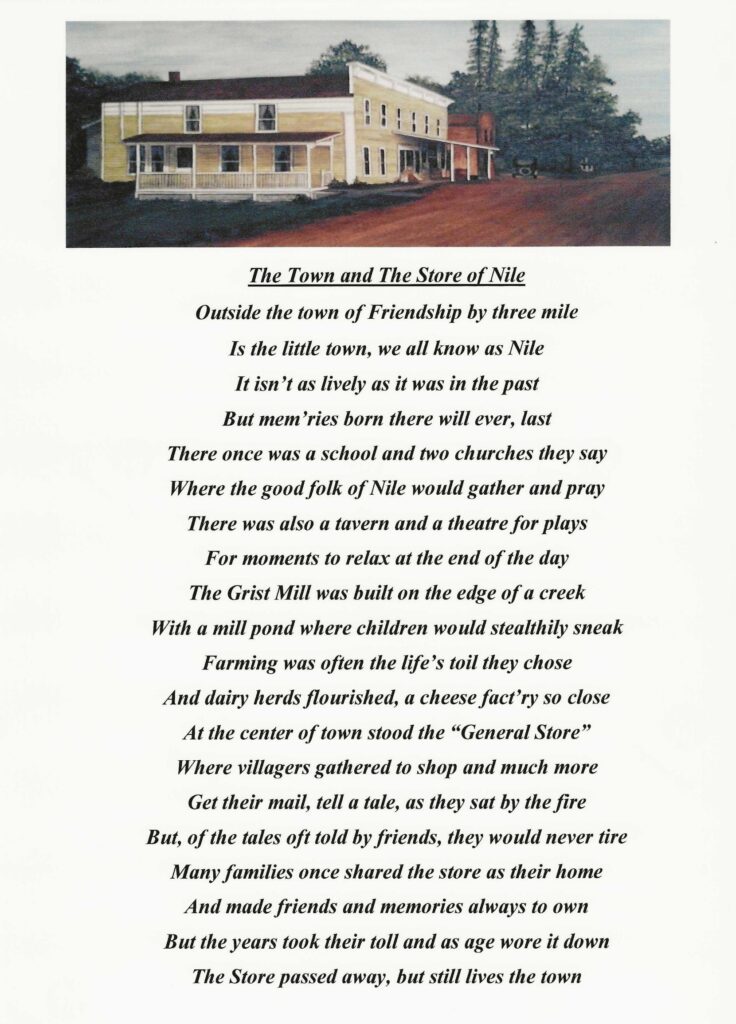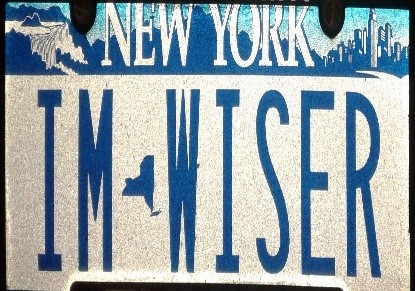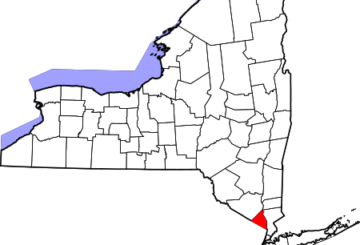Cacography, micro municipalities, and more on Wiser’s hometown of Nile, NY
By Chuck Wiser, I write the words to share what my eyes see and my heart feels
Today’s “writhings” will truly live up to the cacography used as the title of my weekly, if not weakly, submitted articles. Fortunately these are not “articles of impeachment,” but rather, “articles of mis-speachment.” To clarify those words, and therein using some of the terms I was going to mention, I will beg your forgiveness and try. I was going to refer to my frivolous writings as being malaprops. Not wanting to un-intentionally misuse a word, which, by definition, describes what a malaprop is, I referred to my current fallback research source Wikipedia.
The term “malaprop” comes from a character named Mrs. Malaprop in a 1775 play named The Rivals. I leave you to your own devices to investigate my sources further if I piqued your interest. Initially thinking my Title might be malaprop I checked with Mr, Wikipedia and re-learned that the etymological history of words such as mine are actually called a Cacography.
One of my research sources described cacography as “bad spelling.” That was a great lead-in to describe the bad spell of weather we’ve been exposed to the past few days. If I remember correctly, today is the third day in a row that we have been blessed with rain. I guess we are indeed “blessed,” with rain, as it could be snow instead. There are only a “few degrees of separation” between snow and rain.
Today’s title “How do I Start Thee” was an intentional play on a phrase from a poem written by Elizabeth Barrett Browning which started; “How do I love thee? Let me count the ways.” I admit that English was my favorite subject in school but that was largely attributed, at least at first, to my crush on Mrs. Toporas, my English teacher at Friendship Central School (FCS), in the early 60’s. Seriously, she helped develop my appreciation and passion for the language and more specifically, writing it. Mrs. Toporas left FCS after my freshman year and tragically left this earth way too early in life having tragically passed away at an early age. Mrs. Toporas was instrumental in the achievement of my first publication, that being in a collection of youthful writings in an “Anthology” from an institution, of which I am struggling to recall the name. I know where the book is, but in my wife’s: “I’m not getting in there to dig it out.” Be forewarned…I might someday. …Time Passes…
I’m now two hours into my writing, which is not unusual as I don’t normally start my “research” until I am midstream in these articles. I’ve been wracking my brain to recall the name of the institution, from which my first “formal” writing was published. It just came to me. D’Youville University. This is a private university located on the west side of Buffalo, founded by the Grey Nuns in 1908. This little known (locally) university has 54 degree programs and 3000 students.
After submitting my Wramblings piece last week I stumbled across my earlier research notes and discovered some information that I had intended to include with my discussion of towns. I wanted to give an overview of the relative sizes of our common municipality entities. While immersed in my inclusion of several examples of various state’s divisions, I forgot where I wanted to start. I’ll cap off that topic by their inclusion herein. In order of relative size, the following terms, in general, describe the various municipality divisions, often which might be “nested.”
Warning! The following descriptions and designations are very general, and are fluid, as they actually change when localities decide to “incorporate” (or de-incorporate). Population usually is a deciding or driving influence in the designation of communal entities. I am now 3 hours in and still trying to divide these entities into understandable descriptions. As I research, new information pops up that makes what I had initially written, “outdated”. Towns that were once known, and probably still called that conversationally, are now something else. An example of this is what I refer to as “the town” of Friendship. In my youth it was known as and designated a Town. A few years ago, the town officially became a Hamlet. Nile, NY, officially part of the town of Friendship, which itself is now a hamlet, is designated a hamlet, but geographically it actually extends into both Inavale and Wirt. Neither Inavale nor Wirt in Allegany County are stand alone “towns” but exist in name. Amity in Allegany County only exists in name. The town of Belmont exists within Amity.
Further confusing the issue are the entities that exist in name only. I’m not sure how to describe a Township, other than that some towns are also known as townships for tax assessment or voter registration purposes. I guess the township designation describes a division of a County that may not have any specific entities of its own but may be comprised of towns or hamlets within its communal structure. That term is popularly used with Pennsylvania towns.
Backing up to where I intended to start, I will try to give brief descriptions of these overlapping (and overwhelming) terms.
Homesteads or Dwellings are common terms describing a single residence. The first and typically smallest collection of homesteads or dwellings are designated as Hamlets, or a small collection of homes and or farms. Nile, NY, a “suburb” of Friendship, where my childhood residence was, is an example.
Next in the pecking order is a Village. A village is a self-contained group of dwellings, and which adds some basic facilities and public service departments, one, or a few, stores or shops, a small communal meeting place such as a church and/or a dining establishment. The next designation is for a Town, which is a more communal grouping of entities. The Town may include hamlets or even villages.
A Town, typically contains a greater population, and more administrative functions, entities and facilities. A town is likely to have an administrative board including a mayor, and other elected or appointed political figure heads. These public service facilities normally would be shared or extended to overlapping and/or “incorporated” villages.
Next and typically the largest would be a City. The city doesn’t really have any designation that makes it stand out from other populated communities other than its sheer size. Many states, as noted last week, have a population limit or minimum that determines their designation. Cities and Towns typically have similar or shared services. Co-Terminous is a designation that is assigned to towns or villages that may share a common boundary line. They may have separate or shared governmental functions and may be incorporated into the larger entity. I’m guessing but think that Wellsville may very well have that designation. I leave you with an image of my hometown Nile.








